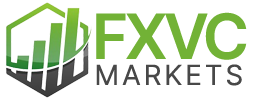Introduction:
In the world of forex trading, having the right tools at your disposal can be the key to unlocking market success. From trading platforms to technical analysis tools and risk management systems, countless resources are available to help traders make informed decisions and maximize their profits. In this article, we’ll explore some of the best forex trading tools that traders should consider incorporating into their trading arsenal.
Chapter 1: Trading Platforms
Trading platforms serve as the gateway to the forex market, providing traders with access to real-time quotes, charts, and order execution capabilities. The most popular trading platforms include MetaTrader 4 (MT4), MetaTrader 5 (MT5), cTrader, NinjaTrader, and TradingView. Each platform offers unique features and functionalities, so choosing one that aligns with your trading style and preferences is essential.
Chapter 2: Charting Software
Charting software is essential for conducting technical analysis and identifying potential trading opportunities. TradingView, MetaTrader (MT4/MT5), NinjaTrader, ProRealTime, and Sierra Charts are among the top charting software options for forex traders. These platforms offer various technical indicators, drawing tools, and customization options to help traders analyze price movements and make informed trading decisions.
Chapter 3: Technical Analysis Tools
Technical tools analyze historical price data and predict future price movements. The most commonly used technical analysis tools include moving averages, relative strength index (RSI), Fibonacci retracement, Bollinger Bands, and MACD (moving average convergence divergence). By incorporating these tools into their trading strategy, traders can identify trends, support and resistance levels, and potential entry and exit points.
Chapter 4: Fundamental Analysis Tools
Fundamental analysis tools analyze economic and geopolitical events that can impact currency prices. Economic calendars, news feeds, central bank announcements, economic indicators, and market sentiment analysis tools are essential for informing about significant market developments. By staying abreast of these factors, traders can make more accurate predictions about future price movements and adjust their trading strategy accordingly.
Chapter 5: Risk Management Tools
Risk management tools are crucial for protecting capital and minimizing losses in the forex market. The most commonly used risk management tools are stop-loss and take-profit orders, position sizing calculators, risk-reward ratio calculators, volatility indicators, and correlation matrices. By implementing proper risk management techniques, traders can mitigate the impact of adverse market movements and preserve their trading capital.
Chapter 6: Trade Management Tools
Trade management tools help traders monitor and manage their trades more effectively. Trade journaling software, trade alerts and notifications, trade recorders and trackers, trade copiers, and backtesting software are all valuable tools for improving trade execution and decision-making. By keeping track of their trades and analyzing past performance, traders can identify areas for improvement and refine their trading strategy over time.
Chapter 7: Automated Trading Systems
Automated trading systems, such as expert advisors (EAs), algorithmic trading software, forex robots, copy trading platforms, and social trading networks, allow traders to automate their trading strategies and execute trades automatically. These systems can benefit traders who need more time or expertise to trade manually. By leveraging the power of automation, traders can take advantage of market opportunities around the clock and remove human emotions from the trading equation.
Chapter 8: Educational Resources
Educational resources are crucial in helping traders develop their skills and knowledge in the forex market. Forex trading courses, webinars and seminars, trading books and ebooks, online forums and communities, and mentorship programs are all valuable educational resources for traders of all levels. By investing in their education and continuous learning, traders can stay ahead of the curve and improve their trading performance.
Conclusion:
In conclusion, the best forex trading tools are essential for success in the dynamic and competitive market. Whether you’re a novice or an experienced professional, incorporating these tools into your trading arsenal can help you make more informed decisions, manage risk effectively, and maximize your profits. By leveraging the power of trading platforms, charting software, technical analysis tools, fundamental analysis tools, risk management tools, trade management tools, automated trading systems, and educational resources, traders can gain a competitive edge and achieve their trading goals. So, take the time to explore and integrate these tools into your trading strategy, and watch as your trading success reaches new heights.
